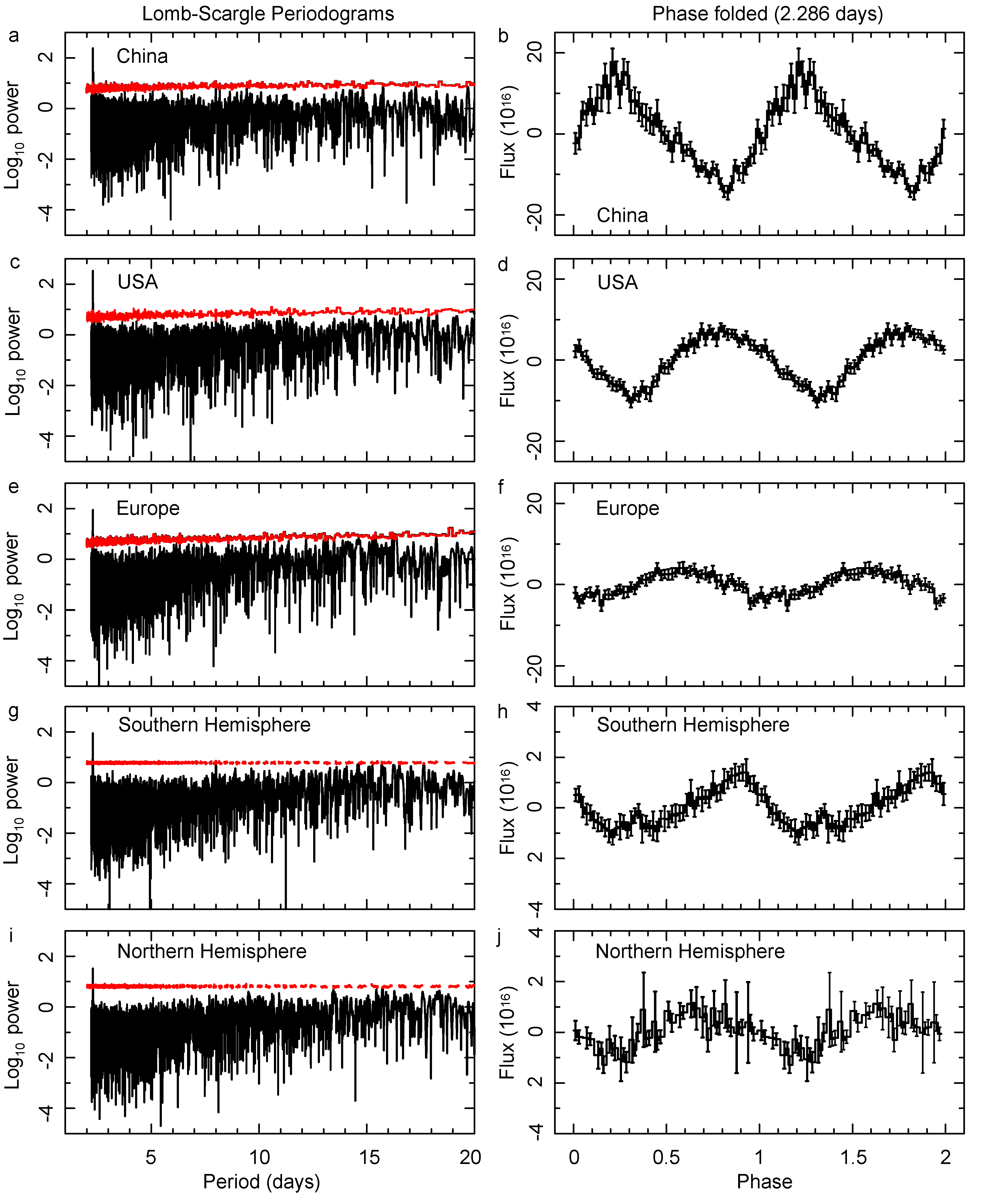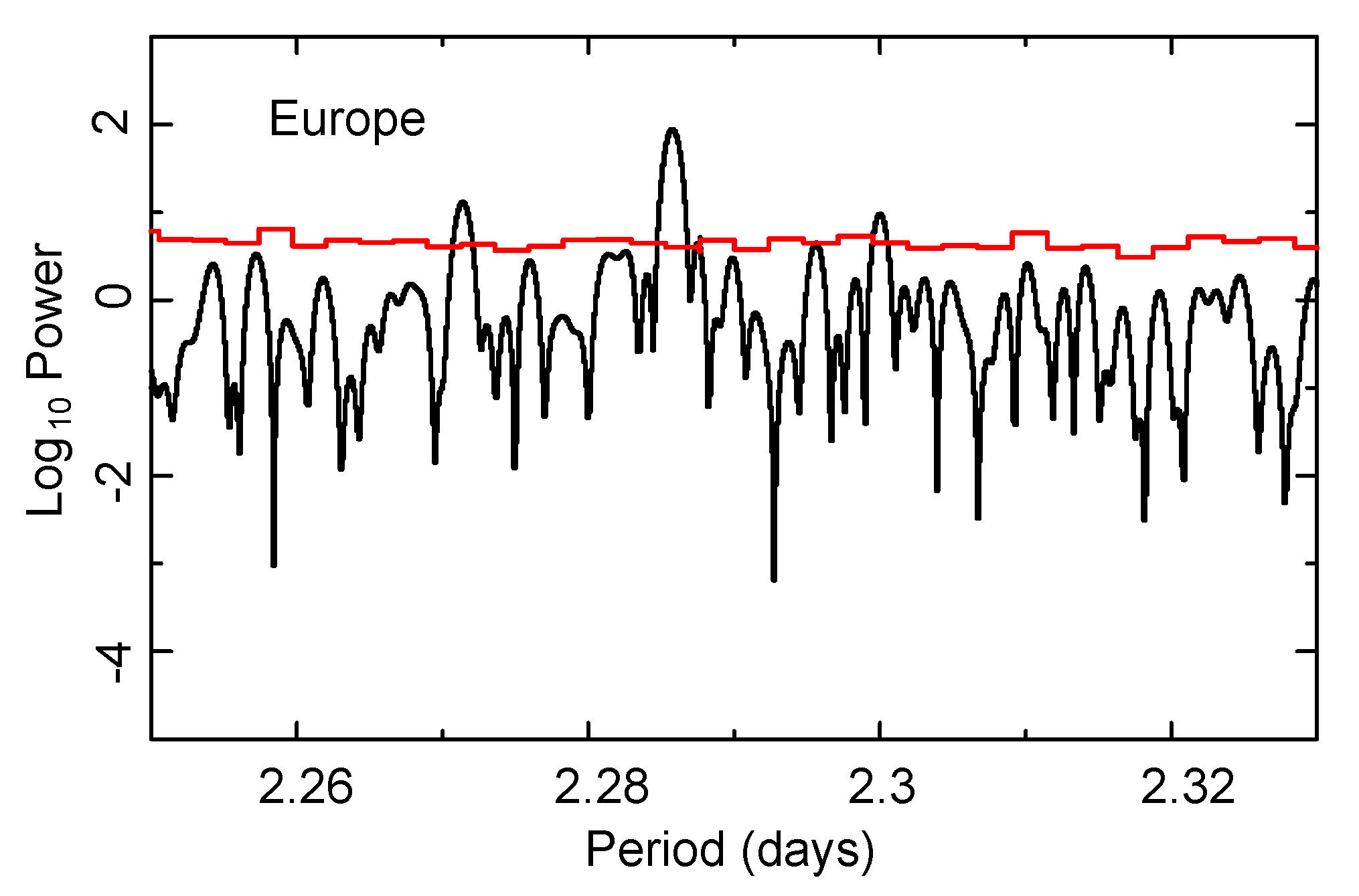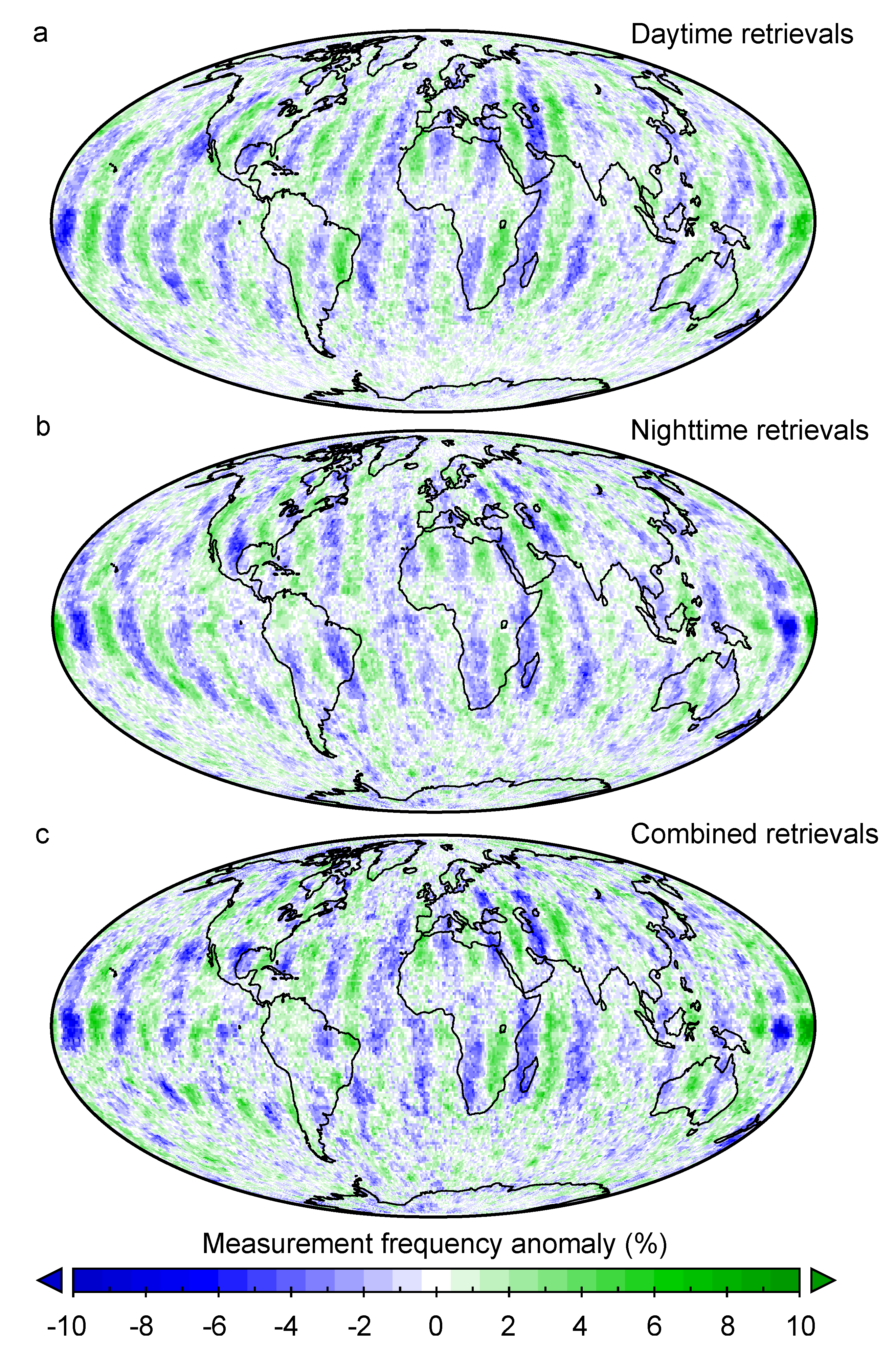Satellite-Detected Carbon Monoxide Pollution during 2000–2012: Examining Global Trends and also Regional Anthropogenic Periods over China, the EU and the USA
Abstract
:1. Introduction
2. Data
3. Analysis
3.1. Globally Averaged CO Values


3.2. Trends in Tropospheric Carbon Monoxide: 2000–2012

3.3. Period Analysis


3.4. Periodic Changes in Measurement Frequency

4. Conclusions
Acknowledgments
Conflicts of Interest
References
- Twomey, S. The influence of pollution on the shortwave albedo of clouds. J. Atmos. Sci. 1977, 34, 1149–1152. [Google Scholar] [CrossRef]
- Platnick, S.; Twomey, S. Determining the susceptibility of cloud albedo to changes in droplet concentration with the Advanced Very High Resolution Radiometer. J. Appl. Meteorol. 1994, 33, 334–347. [Google Scholar] [CrossRef]
- Lohmann, U.; Feichter, J. Global indirect aerosol effects: A review. Atmos. Chem. Phys. 2005, 5, 715–737. [Google Scholar] [CrossRef]
- Solomon, S.; Qin, D.; Manning, M.; Chen, Z.; Marquis, M.; Averyt, K.; Tignor, M.; Miller, H. Climate Change 2007—The Physical Science Basis: Working Group I Contribution to the Fourth Assessment Report of the IPCC; Cambridge University Press: Cambridge, UK, 2007; Volume 4. [Google Scholar]
- Cerveny, R.S.; Balling, R.C. Weekly cycles of air pollutants, precipitation and tropical cyclones in the coastal NW Atlantic region. Nature 1998, 394, 561–563. [Google Scholar] [CrossRef]
- Graedel, T.E.; Farrow, L.A.; Weber, T.A. Photochemistry of the “Sunday Effect”. Environ. Sci. Technol. 1977, 11, 690–694. [Google Scholar] [CrossRef]
- Karl, T. Day of the week variations of photochemical pollutants in the St. Louis area. Atmos. Environ. 1978, 12, 1657–1667. [Google Scholar] [CrossRef]
- Jin, M.; Shepherd, J.M.; King, M.D. Urban aerosols and their variations with clouds and rainfall: A case study for New York and Houston. J. Geophys. Res. Atmos. 2005. [Google Scholar] [CrossRef]
- Quaas, J.; Boucher, O.; Jones, A.; Weedon, G.; Kieser, J.; Joos, H. Exploiting the weekly cycle as observed over Europe to analyse aerosol indirect effects in two climate models. Atmos. Chem. Phys. 2009, 9, 8493–8501. [Google Scholar] [CrossRef]
- Riga-Karandinos, A.; Saitanis, C.; Arapis, G. Study of the weekday-weekend variation of air pollutants in a typical Mediterranean coastal town. Int. J. Environ. Pollut. 2006, 27, 300–312. [Google Scholar] [CrossRef]
- Forster, P.M.F.; Solomon, S. Observations of a weekend effect in diurnal temperature range. Proc. Natl. Acad. Sci. USA 2003, 100, 11225–11230. [Google Scholar] [CrossRef] [PubMed]
- Bäumer, D.; Vogel, B. An unexpected pattern of distinct weekly periodicities in climatological variables in Germany. Geophys. Res. Lett. 2007. [Google Scholar] [CrossRef]
- Tesouro, M.; de La Torre, L.; Nieto, R.; Gimeno, L.; Ribera, P.; Gallego, D. Weekly cycle in NCAR-NCEP reanalysis surface temperature data. Atmósfera 2005, 18, 205–209. [Google Scholar]
- Sanchez-Lorenzo, A.; Calbó, J.; Martin-Vide, J. Reply to comment by HJ Hendricks Franssen et al. on “Winter ‘weekend effect’ in southern Europe and its connections with periodicities in atmospheric dynamics”. Geophys. Res. Lett. 2009. [Google Scholar] [CrossRef]
- Gordon, A. Weekdays warmer than weekends? Nature 1994, 367, 325–326. [Google Scholar] [CrossRef]
- Sitnov, S. Aerosol optical thickness and the total carbon monoxide content over the European Russia territory in the 2010 summer period of mass fires: Interrelation between the variation in pollutants and meteorological parameters. Izv. Atmos. Ocean. Phys. 2011, 47, 714–728. [Google Scholar] [CrossRef]
- Sanchez-Lorenzo, A.; Laux, P.; Hendricks Franssen, H.J.; Calbó, J.; Vogl, S.; Georgoulias, A.; Quaas, J. Assessing large-scale weekly cycles in meteorological variables: A review. Atmos. Chem. Phys. 2012, 12, 5755–5771. [Google Scholar] [CrossRef]
- Delisi, M.P.; Cope, A.M.; Franklin, J.K. Weekly precipitation Ccycles along the northeast corridor? Weather Forecast. 2001, 16, 343–353. [Google Scholar] [CrossRef]
- Schultz, D.M.; Mikkonen, S.; Laaksonen, A.; Richman, M.B. Weekly precipitation cycles? Lack of evidence from United States surface stations. Geophys. Res. Lett. 2007. [Google Scholar] [CrossRef]
- Choi, Y.S.; Ho, C.H.; Kim, B.G.; Hur, S.K. Long-term variation in midweek/weekend cloudiness difference during summer in Korea. Atmos. Environ. 2008, 42, 6726–6732. [Google Scholar] [CrossRef]
- Givati, A.; Rosenfeld, D. Quantifying precipitation suppression due to air pollution. J. Appl. Meteorol. 2004, 43, 1038–1056. [Google Scholar] [CrossRef]
- Zhao, C.; Tie, X.; Lin, Y. A possible positive feedback of reduction of precipitation and increase in aerosols over eastern central China. Geophys. Res. Lett. 2006. [Google Scholar] [CrossRef]
- Ho, C.H.; Choi, Y.S.; Hur, S.K. Long-term changes in summer weekend effect over northeastern China and the connection with regional warming. Geophys. Res. Lett. 2009. [Google Scholar] [CrossRef]
- Yum, S.S.; Cha, J.W. Suppression of very low intensity precipitation in Korea. Atmos. Res. 2010, 98, 118–124. [Google Scholar] [CrossRef]
- Alpert, P.; Halfon, N.; Levin, Z. Does air pollution really suppress precipitation in Israel? J. Appl. Meteorol. Climatol. 2008, 47, 933–943. [Google Scholar] [CrossRef]
- Stjern, C.W.; Stohl, A.; Kristjánsson, J.E. Have aerosols affected trends in visibility and precipitation in Europe? J. Geophys. Res. Atmos. 2011. [Google Scholar] [CrossRef]
- Stjern, C. Weekly cycles in precipitation and other meteorological variables in a polluted region of Europe. Atmos. Chem. Phys. 2011, 11, 4095–4104. [Google Scholar] [CrossRef]
- Ackerman, S.A. Remote sensing aerosols using satellite infrared observations. J. Geophys. Res. Atmos. 1997, 102, 17069–17079. [Google Scholar] [CrossRef]
- Torres, O.; Bhartia, P.; Herman, J.; Sinyuk, A.; Ginoux, P.; Holben, B. A long-term record of aerosol optical depth from TOMS observations and comparison to AERONET measurements. J. Atmos. Sci. 2002, 59, 398–413. [Google Scholar] [CrossRef]
- Conway, T.; Tans, P.; Waterman, L.; Thoning, K.; Masarie, K.; Gammon, R. Atmospheric carbon dioxide measurements in the remote global troposphere, 1981–1984. Tellus B 1988, 40, 81–115. [Google Scholar] [CrossRef]
- Edwards, D.; Emmons, L.; Hauglustaine, D.; Chu, D.; Gille, J.; Kaufman, Y.; Pétron, G.; Yurganov, L.; Giglio, L.; Deeter, M.; et al. Observations of carbon monoxide and aerosols from the Terra satellite: Northern Hemisphere variability. J. Geophys. Res. 2004. [Google Scholar] [CrossRef]
- Novelli, P.; Masarie, K.; Lang, P. Distributions and recent changes of carbon monoxide in the lower troposphere. J. Geophys. Res. Atmos. 1998, 103, 19015–19033. [Google Scholar] [CrossRef]
- Pan, L.; Gille, J.C.; Edwards, D.P.; Bailey, P.L.; Rodgers, C.D. Retrieval of tropospheric carbon monoxide for the MOPITT experiment. J. Geophys. Res. Atmos. 1998, 103, 32277–32290. [Google Scholar] [CrossRef]
- Fortems-Cheiney, A.; Chevallier, F.; Pison, I.; Bousquet, P.; Szopa, S.; Deeter, M.; Clerbaux, C. Ten years of CO emissions as seen from Measurements of Pollution in the Troposphere (MOPITT). J. Geophys. Res. Atmos. 2011. [Google Scholar] [CrossRef]
- Deeter, M.; Worden, H.; Gille, J.; Edwards, D.; Mao, D.; Drummond, J.R. MOPITT multispectral CO retrievals: Origins and effects of geophysical radiance errors. J. Geophys. Res. 2011. [Google Scholar] [CrossRef]
- Deeter, M.; Worden, H.; Edwards, D.; Gille, J.; Andrews, A. Evaluation of MOPITT retrievals of lower-tropospheric carbon monoxide over the United States. J. Geophys. Res. Atmos. (1984–2012) 2012. [Google Scholar] [CrossRef]
- Deeter, M.; Emmons, L.; Edwards, D.; Gille, J.; Drummond, J.R. Vertical resolution and information content of CO profiles retrieved by MOPITT. Geophys. Res. Lett. 2004. [Google Scholar] [CrossRef]
- Pan, L.; Edwards, D.P.; Gille, J.C.; Smith, M.W.; Drummond, J.R. Satellite remote sensing of tropospheric CO and CH(4): Forward model studies of the MOPITT instrument. Appl. Opt. 1995, 34, 6976–6988. [Google Scholar] [CrossRef] [PubMed]
- Deeter, M.; Martínez-Alonso, S.; Edwards, D.; Emmons, L.; Gille, J.; Worden, H.; Pittman, J.; Daube, B.; Wofsy, S. Validation of MOPITT Version 5 thermal-infrared, near-infrared, and multispectral carbon monoxide profile retrievals for 2000–2011. J. Geophys. Res. Atmos. 2013. [Google Scholar] [CrossRef]
- Emmons, L.; Edwards, D.; Deeter, M.; Gille, J.; Campos, T.; Nédélec, P.; Novelli, P.; Sachse, G. Measurements of Pollution in the Troposphere (MOPITT) validation through 2006. Atmos. Chem. Phys. 2009, 9, 1795–1803. [Google Scholar] [CrossRef]
- Deeter, M.; Edwards, D.; Gille, J.; Emmons, L.; Francis, G.; Ho, S.P.; Mao, D.; Masters, D.; Worden, H.; Drummond, J.R.; et al. The MOPITT version 4 CO product: Algorithm enhancements, validation, and long-term stability. J. Geophys. Res. Atmos. 2010. [Google Scholar] [CrossRef]
- Goldsmith, J.R.; Landaw, S.A. Carbon monoxide and human health. Science 1968, 162, 1352–1359. [Google Scholar] [CrossRef] [PubMed]
- Hansen, A.B.; Palmgren, F. VOC air pollutants in Copenhagen. Sci. Total Environ. 1996, 189, 451–457. [Google Scholar] [CrossRef]
- Nielsen, T. Traffic contribution of polycyclic aromatic hydrocarbons in the center of a large city. Atmos. Environ. 1996, 30, 3481–3490. [Google Scholar] [CrossRef]
- Marr, L.C.; Harley, R.A. Modeling the effect of weekday-weekend differences in motor vehicle emissions on photochemical air pollution in central California. Environ. Sci. Technol. 2002, 36, 4099–4106. [Google Scholar] [CrossRef] [PubMed]
- Ketzel, M.; Wåhlin, P.; Berkowicz, R.; Palmgren, F. Particle and trace gas emission factors under urban driving conditions in Copenhagen based on street and roof-level observations. Atmos. Environ. 2003, 37, 2735–2749. [Google Scholar] [CrossRef]
- Khalil, M.; Rasmussen, R. The global cycle of carbon monoxide: Trends and mass balance. Chemosphere 1990, 20, 227–242. [Google Scholar] [CrossRef]
- Khalil, M.; Rasmussen, R. Carbon monoxide in the Earth’s atmosphere: Increasing trend. Science 1984, 224, 54–56. [Google Scholar] [CrossRef] [PubMed]
- Khalil, M.; Rasmussen, R. Carbon monoxide in the Earth’s atmosphere: Indications of a global increase. Nature 1988, 332, 242–245. [Google Scholar] [CrossRef]
- Novelli, P.C.; Masarie, K.A.; Tans, P.P.; Lang, P.M. Recent changes in atmospheric carbon monoxide. Science 1994, 263, 1587–1590. [Google Scholar] [CrossRef] [PubMed]
- Mott, J.A.; Wolfe, M.I.; Alverson, C.J.; Macdonald, S.C.; Bailey, C.R.; Ball, L.B.; Moorman, J.E.; Somers, J.H.; Mannino, D.M.; Redd, S.C. National vehicle emissions policies and practices and declining US carbon monoxide–related mortality. JAMA 2002, 288, 988–995. [Google Scholar] [CrossRef] [PubMed]
- Neal, R.M. Probabilistic Inference Using Markov Chain Monte Carlo Methods; Technical Report CRG-TR-93-1; Department of Computer Science, University of Toronto: Toronto, Canada, 1993; pp. 1–144. [Google Scholar]
- Ripley, B.D. Stochastic Simulation; Wiley: New York, NY, USA, 2009; Volume 316. [Google Scholar]
- Akimoto, H. Global air quality and pollution. Science 2003, 302, 1716–1719. [Google Scholar] [CrossRef] [PubMed]
- Richter, A.; Burrows, J.P.; Nüß, H.; Granier, C.; Niemeier, U. Increase in tropospheric nitrogen dioxide over China observed from space. Nature 2005, 437, 129–132. [Google Scholar] [CrossRef] [PubMed]
- He, Y.; Uno, I.; Wang, Z.; Ohara, T.; Sugimoto, N.; Shimizu, A.; Richter, A.; Burrows, J.P. Variations of the increasing trend of tropospheric NO2 over central east China during the past decade. Atmos. Environ. 2007, 41, 4865–4876. [Google Scholar] [CrossRef]
- Zhang, X.; Zhang, P.; Zhang, Y.; Li, X.; Qiu, H. The trend, seasonal cycle, and sources of tropospheric NO2 over China during 1997–2006 based on satellite measurement. Sci. China Ser. D Earth Sci. 2007, 50, 1877–1884. [Google Scholar] [CrossRef]
- Edwards, D.; Emmons, L.; Gille, J.; Chu, A.; Attié, J.L.; Giglio, L.; Wood, S.; Haywood, J.; Deeter, M.; Massie, S.; et al. Satellite-observed pollution from Southern Hemisphere biomass burning. J. Geophys. Res. 2006. [Google Scholar] [CrossRef]
- Scargle, J.D. Studies in astronomical time series analysis. IIStatistical aspects of spectral analysis of unevenly spaced data. Astrophys. J. 1982, 263, 835–853. [Google Scholar] [CrossRef]
- Press, W.H.; Teukolsky, S.A.; Vetterling, W.T.; Flannery, B.P. Numerical Recipes in C: The Art of Scientific Computing; Cambridge University Press: Cambridge, UK, 1992. [Google Scholar]
- Horne, J.H.; Baliunas, S.L. A prescription for period analysis of unevenly sampled time series. Astrophys. J. 1986, 302, 757–763. [Google Scholar] [CrossRef]
- Timmer, J.; König, M. On generating power law noise. Astron. Astrophys. 1995, 300, 707–710. [Google Scholar]
- Vaughan, S. A simple test for periodic signals in red noise. Astron. Astrophys. 2005, 431, 391–403. [Google Scholar] [CrossRef]
© 2014 by the authors; licensee MDPI, Basel, Switzerland. This article is an open access article distributed under the terms and conditions of the Creative Commons Attribution license (http://creativecommons.org/licenses/by/3.0/).
Share and Cite
Laken, B.A.; Shahbaz, T. Satellite-Detected Carbon Monoxide Pollution during 2000–2012: Examining Global Trends and also Regional Anthropogenic Periods over China, the EU and the USA. Climate 2014, 2, 1-16. https://doi.org/10.3390/cli2010001
Laken BA, Shahbaz T. Satellite-Detected Carbon Monoxide Pollution during 2000–2012: Examining Global Trends and also Regional Anthropogenic Periods over China, the EU and the USA. Climate. 2014; 2(1):1-16. https://doi.org/10.3390/cli2010001
Chicago/Turabian StyleLaken, Benjamin A., and Tariq Shahbaz. 2014. "Satellite-Detected Carbon Monoxide Pollution during 2000–2012: Examining Global Trends and also Regional Anthropogenic Periods over China, the EU and the USA" Climate 2, no. 1: 1-16. https://doi.org/10.3390/cli2010001



